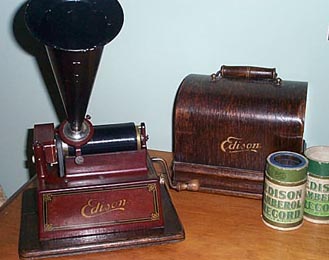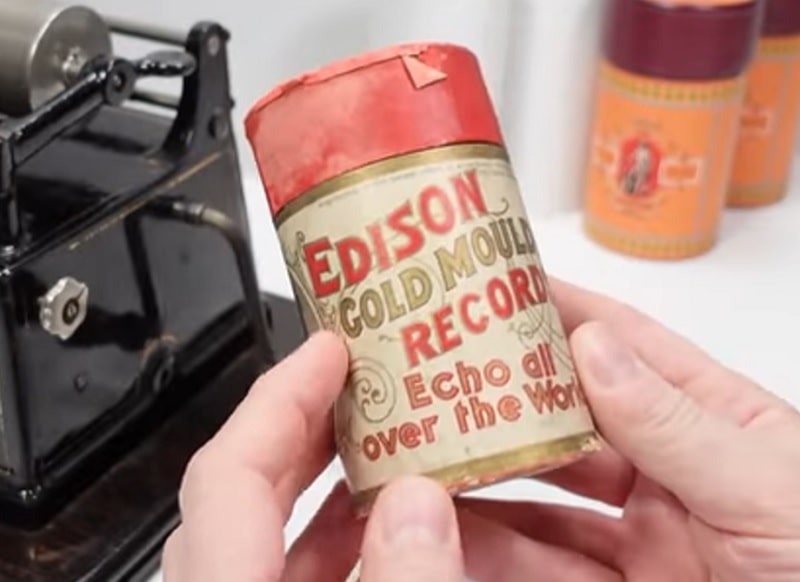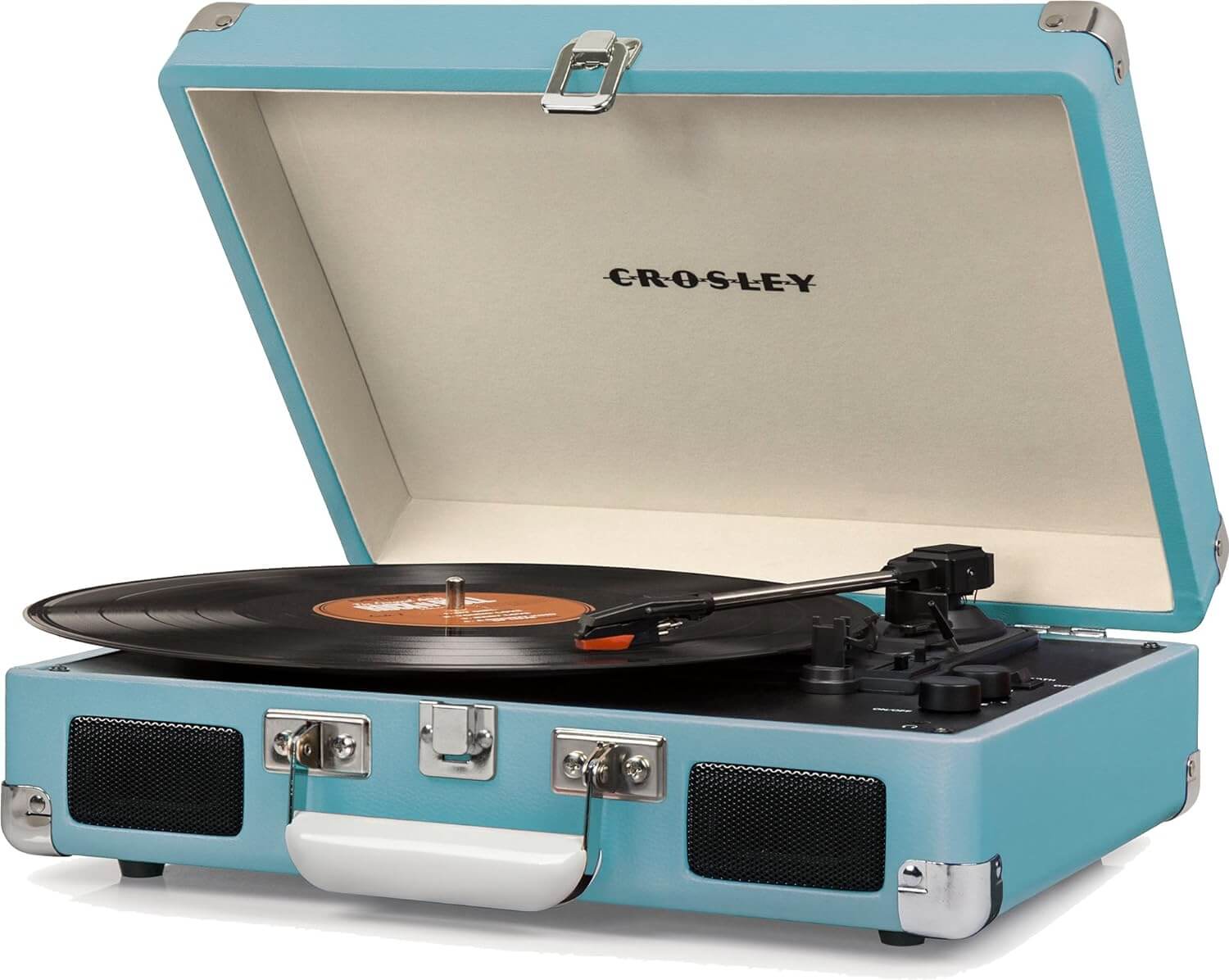Disclosure: This article contains affiliate links and as an Amazon Associate, we earn from qualifying purchases made through our links.
Well, I have seen many people curious to know the difference between a phonograph and a record player.
As most of us know, the phonograph is a legendary device that introduced sound recording and playback of recorded sound to the world.
Record players or turntables are evolved versions of the phonograph and gramophone, but modern record players work very differently from old phonographs. Also, the design and components used in both devices are different.
We can understand the overall difference by just looking at both devices, but understanding the deep insights by just taking a look is difficult.
So, to help you understand the difference properly, we have drafted this article comparing both devices according to their design, features, components, characteristics, etc., and sharing all the in-depth insights.
Previously, we have compared gramophone vs phonograph, gramophone vs record player, record player vs turntable, and today, we are discussing the difference between a phonograph and a record player.

AT-LP60X-BK with Edifier R1280DB speakers
A beginner-friendly combo to kickstart your vinyl journey — no extra phono preamp or amplifier needed!
- Beginner-friendly
- Complete plug-and-play setup
- Fully automatic turntable
- High-fidelity sound
- Sleek design and easy to use
Phonograph Vs Record Player:
| Phonograph | Record Player | |
|---|---|---|
| Definition | The first sound recording and playback device that used Edison cylinders is known as a phonograph. | A unit that consists of a turntable, phono preamp, amplifier, and speakers in a single unit is known as a record player. |
| Sound Recording & Playback Medium | Tin foil-wrapped metal cylinders, wax-coated cardboard tubes, and all-wax cylinders. | Vinyl records & shellac records |
| Speed (RPM) | About 120 RPM | Supports multiple speed: 33(1/3) RPM, 45RPM and 78RPM |
| Playback Time | 2 minutes to 4 minutes | 5(1/3) minutes to 22 minutes per side |
| Works on | Mechanical energy | Electricity |
| Sound Quality | Best in their time but no way near to current record players | On a whole new level as compared to the phonograph. |
| Stylus | There are 2 types of stylus: a cutting stylus is used while recording sound and a playback stylus is used while listening to the recorded sound. | Mostly sapphire is used. |
| Cartridge | No cartridge | Ceramic cartridge |
| Phono Preamp/Amplifier | No | Yes |
| Speakers | No | Yes |
| Durability | More durable | Less durable |
| Cost | Expensive | Cheaper |
So, this is the brief difference between a phonograph and a record player.
Now, we will discuss these two popular devices separately and then share an in-depth explanation of the points mentioned in the comparison table above.
What is a Phonograph:
A phonograph, invented by Thomas Edison in 1877, was the first device to allow sound recording and playback.
It is a standalone unit that purely works on mechanical energy. Unlike modern-play record players, you don’t need speakers or amplifiers to amplify the sound.
In the current era, we use vinyl records to store audio, but phonographs use cylinders to record and playback sound.
The phonograph comes with two styluses: a cutting stylus and a playback stylus.
The cutting stylus was used while recording the sound, i.e., it catches the vibrations from the horn and engraves the grooves on the wax cylinder. On the other hand, the playback stylus was used for listening to the recorded sound. It just follows the grooves engraved by a cutting stylus and produces sound.
In December 1877, Thomas Edison used an indented sheet of tin foil wrapped around a metal cylinder, which was not a practical recording medium and needed a lot of upgrades.
After the introduction of wax as the recording medium by Alexander Graham Bell and Chichester Bell, Edison replaced the old metal cylinder with tin foil with thicker all-wax cylinders that could be repeatedly used by shaving the current groove surface.
At the beginning of 1889, the first prerecorded wax cylinder was marketed, and the feature of reuse gave these cylinders an advantage over prerecorded gramophone discs that couldn’t be reused.
But the issue with these soft all-wax cylinders is that they wear out after 20–25 plays.
Well, this issue was a major one, and the Edison team encountered it in 1902 by replacing the old soft wax cylinders with improved and hardened wax that could be played 100 times or more. These new and improved cylinders are marketed as “Edison Gold Moulded Records”.
With the upgradation of these cylinders, the concept of creating a master cylinder was developed, labeled “Gold Moulded,” through which hundreds of cylinders could be made using a single master cylinder, which boosted production to a whole new level.
Instead of just cylinders, many upgrades were made to the phonograph machine. The original phonograph machine could play just a 2-minute cylinder, but seeing that the gramophone disc’s playback time is around 3-5 minutes, in late 1908, Edison launched new wax cylinders with 4 minutes of playback time along with an upgrade to the phonograph to support 4 minutes of playback time.
Even after many upgrades, the disc format finally won the commercial battle in the 1910s, and many known record manufacturers dropped the cylinder format and started selling only discs, resulting in the decline of wax cylinders.
How the Phonograph Works:
To learn an in-depth description of the working concept, I recommend reading this article: How does a phonograph work?
Here is a video tutorial showing a glimpse of the working concept:
What is a Record Player:
A record player is a plug-and-play device through which you can listen to your vinyl records with ease. It is a standalone unit that consists of a turntable, a phono preamp, an amplifier, and speakers.
We have covered the most popular record players, i.e., Crosley record players and Victrola record players.
You can learn about them through the articles linked above and if you are also curious about the turntable and record player, then I suggest you read this article about the difference between the turntable and record player.
Difference Between Phonograph And Record Player:
Now, we are covering every aspect mentioned in the comparison table in depth.
Sound Quality:
Well, you shouldn’t compare two devices according to their sound quality.
As I told you, the phonograph is the first sound recording and playback device that was invented around 150 years ago.
Over the years, many things have happened, like world wars, revolutions, technological advancement, the internet, the start of the digital era, and much more. And, the technology has evolved so much that all the limitations are overcome by recently launched record players and turntables, which puts the record player’s sound quality on a whole new level as compared to old phonographs.
Power Source:
The phonograph works on mechanical energy, i.e., you need to wind the phonograph using hand-cranked until it is fully wound and rotate the speed switch to make the cylinder spin.
While the record player works on the electricity. You need to connect the power adapter to the record player and turn it on.
If we talk about music reproduction from record grooves, both phonograph and record players work on the same concept, i.e., engraving and reading sound waves. We have already published an amazing guide on how do vinyl records work and I recommend you to read it.
Playback Time:
Phonograph Playback Time:
The playback of the phonograph is a maximum of 4 minutes using the 4-minute cylinder and 4-minute compatible phonograph.
The record player offers different playback times depending on the speed and size of the vinyl record. You will understand this better with the information mentioned in the table following:
Record Player Playback Time:
| Record Size | RPM (Revolutions Per Minute) | Playback Time |
|---|---|---|
| 16 inch | 33(1/3) RPM | 15 min/side |
| 12 inch | 33(1/3) RPM | 22 min/side |
| 45 RPM | 15 min/side | |
| 10 inch | 33(1/3) RPM | 12–15 min/side |
| 45 RPM | 9–12 min/side | |
| 78 RPM | 3 min/side | |
| 7 inch | 45 RPM | 5(1/3) min/side |
Durable:
The phonographs were built with heavy metal and iron, while the current record players are built with cheap plastic and other bad-quality components.
So, in the long run, phonographs are more durable than record players like Crosley or Victrola.
Cost:
The working phonograph is very rare to find, and the 4-minute model is even rarer. So, as you know, the more rare the item is, the more costly it becomes. On top of that, the wax cylinders are also costly.
On the other hand, record players are easily available for under $80, and the vinyl record will cost around $10 to $50, excluding the premium ones.
Frequently Asked Questions:
Q1- Did the record player evolve from the phonograph?
Yes, the record players are indirectly evolved from the phonograph. Firstly, phonographs evolved into gramophones, and further gramophones evolved into modern-day record players.
Q2- What were record players called in the 1920s?
In the 1920s, record players were known as gramophones and phonographs.
Q3- What was invented after the phonograph?
The gramophone was invented after the phonograph by Emile Berliner in 1887.
Q4- Can you play records on a phonograph?
No, you can’t play vinyl or shellac records on a phonograph. You can only play phonograph records, also known as phonograph cylinders or wax cylinders.
Q6- Can old phonographs play new records?
No, old phonographs can’t play modern-day records.
Q7- What are old phonograph records made of?
There were a lot of materials phonographs were made from, like, tinfoil, beeswax, brown wax, black wax, metallic soap, celluloid, and much more.
Source:
- https://en.wikipedia.org/wiki/Phonograph_cylinder
- https://en.wikipedia.org/wiki/Phonograph
- https://en.wikipedia.org/wiki/Phonograph_record
We have shared the in-depth difference between a phonograph and a record player in the simplest manner possible. If you still have questions about these devices, then please comment below. We will get back to you as soon as possible.





